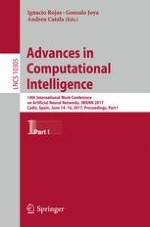2017 | OriginalPaper | Buchkapitel
Pooling Spike Neural Network for Acceleration of Global Illumination Rendering
verfasst von : Joseph Constantin, Andre Bigand, Ibtissam Constantin
Erschienen in: Advances in Computational Intelligence
Aktivieren Sie unsere intelligente Suche, um passende Fachinhalte oder Patente zu finden.
Wählen Sie Textabschnitte aus um mit Künstlicher Intelligenz passenden Patente zu finden. powered by
Markieren Sie Textabschnitte, um KI-gestützt weitere passende Inhalte zu finden. powered by
